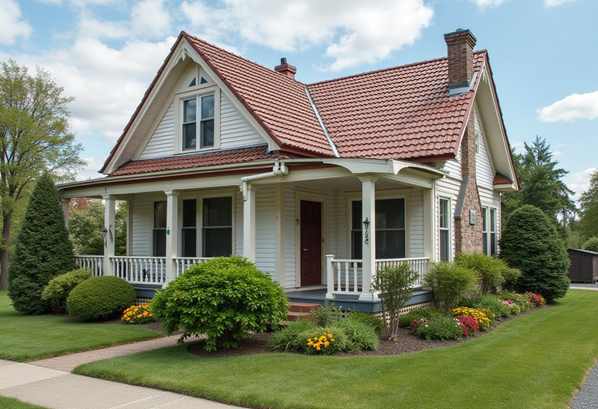
So, you’re considering building a home—not just as a place to live, but as a smart business move? Whether you’re flipping houses, renting properties, or diving into the real estate game, knowing how long it takes to build a home (and how to speed it up) can save you money, stress, and sleepless nights.
Key Stages in Home Construction (And Why They Matter for Business)
1. Planning and Designing: Get It Right or Pay the Price
Jumping into construction without a solid plan is a bad idea. It’s like starting a business without a strategy—setting yourself up for delays, extra costs, and frustration.
Here’s what needs to happen first:
- Pick a design that sells. Whether you hire an architect or choose a pre-designed layout, ensure the design meets market demand.
- Choose materials wisely – Cheap now can mean expensive repairs later. Balance cost with long-term resale value.
- Get permits early – No paperwork = no progress. Delays in approvals can kill your budget and timeline.
Companies like AAR (America’s Advantage Remodeling) make planning easier, helping you avoid rookie mistakes and unnecessary delays.
2. Site Prep & Foundation: The Backbone of Your Investment
If the foundation isn’t rock-solid, your investment is on shaky ground—literally. This stage includes:
Clearing and levelling the land.
- Digging and pouring the foundation.
- Making sure everything is 100% structurally sound.
If you cut corners here, you’ll be preparing for cracks, leaks, and lawsuits. Investors take note: A solid foundation equals higher property value and fewer maintenance headaches.
3. Framing & Roofing: Now It Starts Looking Like Money
This is when your project stops being a hole in the ground and starts resembling a house. Here’s what happens:
- Walls go up.
- The roof goes on.
- Windows and doors get installed.
The faster you finish this phase, the sooner you can protect your investment from weather damage and move on to the next steps. Delays here burn cash daily.
4. Plumbing, Electrical, HVAC: The Lifelines of Your Property
No one wants a house that floods, loses power, or turns into a sauna in summer. This step involves:
- Installing water and gas lines.
- Wiring up the electrical system.
- Adding HVAC for climate control.
Pro Tip: Energy-efficient systems save money and attract better buyers or tenants. Are there higher upfront costs? Yes, but the long-term profits make it worth it.
5. Interior Finishes: Where the Real Value Kicks In
We’re talking about paint, flooring, cabinets, and fixtures. These make people fall in love with a property, and investors can significantly increase its resale value.
- Stick to low-maintenance finishes (less upkeep = happier tenants).
- Avoid trendy but short-lived designs (they age fast).
- Focus on quality where it matters most (kitchen and bathrooms = significant ROI).
6. Landscaping & Exterior: Curb Appeal = Higher Selling Price
No matter how good the house looks, your investment is in trouble if the outside screams ‘abandoned lot’. Fix that with:
- Clean, modern landscaping.
- Durable driveways and patios.
- Secure fencing (because safety sells).
Inline Security Fence offers fencing that keeps properties safe and boosts their value. A small thing that makes a big change.
7. Final Inspections & Last-Minute Fixes
Before you list, rent, or move in, you have to get the green light from inspectors. This step includes:
- Checking for code violations (because no one wants legal drama).
- Fixing last-minute touch-ups and defects.
- Securing the occupancy certificate.
The faster you pass inspection, the sooner you start making money. It’s as simple as that.
What Can Delay the Process? (And Cost You Extra Money)
Delays suck, especially when they cost thousands of dollars per week. Here’s what can slow you down:
- Bad weather – You can’t control rain, but you can plan around it.
- Material & labour shortages – Order in advance. If you wait till the last minute, get ready for frustration.
- Changing plans mid-way – Every tweak adds weeks or months to the timeline. Decide early, and stick to it.
Savvy investors plan for these risks upfront to avoid getting caught off guard.
FAQs: The Stuff You’re Probably Wondering About
Q: How do I speed up construction?
A: Plan like a pro. Hire the right team. Don’t waste time on last-minute changes. And work with experts like AAR who can get things done efficiently.
Q: Is fencing important for real estate investments?
A: 100%. Security increases property value, attracts better tenants, and reduces liability risks. Inline Security Fence is an excellent option for reliable, business-friendly fencing.
Q: What permits do I need to build a house?
A: Zoning, building, electrical, plumbing—you name it. Check local regulations before starting, or risk getting shut down mid-project.
Q: Should I build a new home or remodel an old one?
A: Depends on the market. If buying land is expensive, remodelling is often cheaper. But new builds can be a solid investment if you want complete control over the final product. Companies like AAR can guide you in finding the best strategy.
Q: What’s the best type of fence for a rental or flip?
A: Metal or chain-link fences are the best choice for security and durability. Inline Security Fence offers some solid options tailored for investment properties.
Final Take: Make Home Building Work for Your Business
Building a home is not just about construction—it’s about making money. Whether flipping, renting, or developing, you must think like an investor.
By working with trusted pros like AAR for renovations and Inline Security Fence for safety, you can reduce risks, speed up timelines, and boost your profits.




